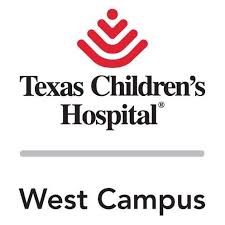 As one of only a select number of pediatric hospitals in the U.S., Texas Children’s Cancer Center will now offer I-131 MIBG, a targeted nuclear medicine therapy that combines metaiodobenzylguanidine (MIBG) with radioactive iodine (I-131) to treat patients with high-risk neuroblastoma. This is the first pediatric treatment location in Houston designed specifically for this therapy and one of only a handful in the southern U.S. For more information about MIBG therapy at Texas Children’s Cancer Center, visit the Neuroblastoma Program website.
As one of only a select number of pediatric hospitals in the U.S., Texas Children’s Cancer Center will now offer I-131 MIBG, a targeted nuclear medicine therapy that combines metaiodobenzylguanidine (MIBG) with radioactive iodine (I-131) to treat patients with high-risk neuroblastoma. This is the first pediatric treatment location in Houston designed specifically for this therapy and one of only a handful in the southern U.S. For more information about MIBG therapy at Texas Children’s Cancer Center, visit the Neuroblastoma Program website.
“We are very excited to now offer MIBG therapy right here at Texas Children’s Hospital,” said Dr. Jennifer Foster, clinical co-director of the Neuroblastoma Program at Texas Children’s Cancer Center. “Being able to offer this therapy onsite is a real advantage for our patients. The suite will also provide us with the ability to explore the use of I-131 MIBG therapy in combination with other therapies as part of novel clinical trials.”
Each year in the U.S., over 600 children are diagnosed with neuroblastoma, a cancer of the nervous system that most often occurs in infants and young children. While surgery and chemotherapy are part of standard neuroblastoma treatment regimens, MIBG therapy has often proven to be an excellent treatment option, especially for those with a higher chance of relapse.
“As the largest pediatric cancer center in the U.S., it is essential to our continued success that we provide our patients with the highest quality of care and treatment options,” said Dr. David Poplack, director of Texas Children’s Cancer Center. “It is important to our team that we be on the cutting edge of the most advanced therapies and research. Being able to offer I-131 MIBG treatment in-house is another example of our unmatched dedication and commitment to excellence.”
The suite, which was created in partnership with Texas Children’s Department of Radiology, contains three rooms: a lead-lined patient room where the therapy is administered, an adjoining room with a lead-lined viewing window where family members can spend the night and be near their child, and an entry area where clinicians can meet, consult and care for the patient.
During their treatment in the specialized therapy room, patients receive the therapeutic doses of radiation that targets the neuroblastoma. The 1548-square-foot room was designed by Texas Children’s Nuclear Medicine specialists to have all necessary protective features and proper procedures in place to ensure the safety of the patient and care team. A team of highly-trained specialists who are specifically trained to work with MIBG therapy all play a significant role in the care of the patient and family during the treatment.
With Texas Children’s Cancer Center now providing this therapy on-site, patients will be able to receive all of their care in one location, including lab work, stem-cell infusion, treatment and any follow-up.
Texas Children’s Cancer Center is ranked 4th nationally by U.S. News & World Report. As the largest pediatric cancer center in the country, Texas Children’s Cancer Center providespersonalized, high-quality, family-centered care to children, adolescents and young adults with cancer. Its patients come from more than 35 states and 26 countries to receive the most advanced therapies. Texas Children’s Cancer Center is also a recognized leader in clinical and laboratory research for pediatric cancer, leading the translation of break-through research findings from the laboratory into the clinic.

